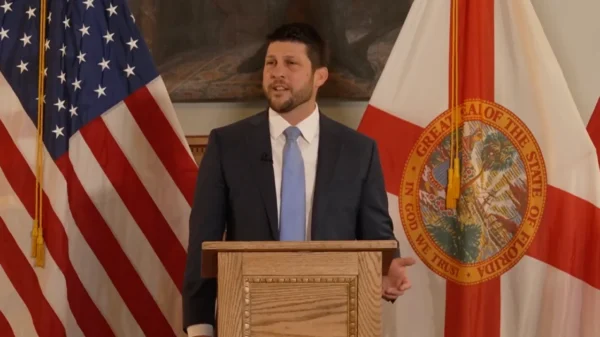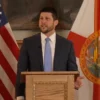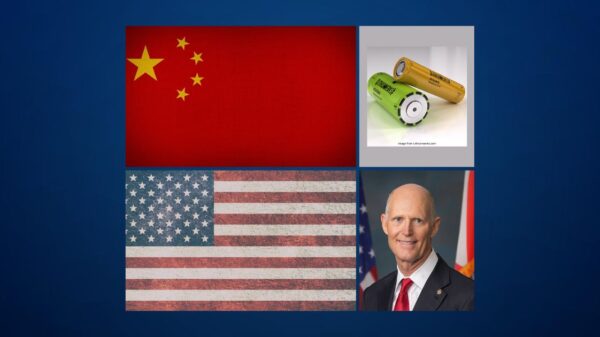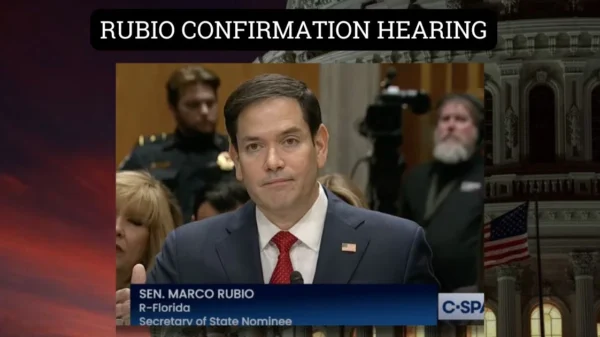Over the weekend, U.S. Sen. Marco Rubio, R-Fla., joined U.S. Sen. Richard Blumenthal, D-Ct. and U.S. Senate colleagues in raising concerns with Acting U.S. Navy Sec. Thomas Modly over proposed acquisition shortfalls in fiscal year (FY) 2021 for the Virginia Class submarine program, which could negatively impact both the United States’ undersea superiority and the submarine industrial base.
The Navy’s FY 2021 budget request does not include funding for a tenth Block V submarine which, as the senators note in their letter, “directly contradicts the National Defense Strategy and inexplicably delays the Navy’s goal of reaching 66 fast-attack submarines by 2048.”
Additional signers include U.S. Sens. Chris Murphy, D-Ct., Jeanne Shaheen, D-NH, Jack Reed, D-RI, Tammy Baldwin, D-Wisc., Sheldon Whitehouse, D-RI, Lindsey Graham, R-SC, Kyrsten Sinema, D-Ariz., Maggie Hassan, D-NH, Mark Warner, D-Va., Bob Casey, D-Penn., Tim Kaine, D-Va., Roger Wicker, R-Miss., Mazie Hirono, D-Hawaii, Sherrod Brown, D-Ohio, and Josh Hawley, R-Mo.
In the letter, the senators asked for additional information from the Navy to justify the proposed submarine fleet reduction, citing Assistant Secretary Geurts’ testimony before the Senate Armed Services Committee in March 2019, which warned: “Our biggest shortfall…is in attack submarines. And that situation will get worse before it gets better. And so we are looking for any opportunity to accelerate that.”
The full text of the letter is below.
Dear Acting Secretary Modly:
We write to express our concern regarding the Fiscal Year (FY) 2021 budget request, which includes only $4.9 billion in full procurement funding for the Virginia Class program. With this proposal, the Navy signals that it will not exercise the option for a tenth Block V submarine–a decision that directly contradicts the National Defense Strategy and inexplicably delays the Navy’s goal of reaching 66 fast-attack submarines by 2048. We expect that you will include funding for a second Virginia Class submarine on the Navy’s unfunded requirements list, and we request an assessment of how this budget request, if enacted, would impact the delivery schedule for the Virginia and Columbia Class programs and the submarine industrial base.
In March 2019, Assistant Secretary Geurts testified before the Senate Armed Services Committee: “Our biggest shortfall…is in attack submarines. And that situation will get worse before it gets better. And so we are looking for any opportunity to accelerate that.” This budget request exacerbates this shortfall by decreasing investment in the Virginia Class program. Fast attack submarines will help ensure our asymmetric advantage and undersea superiority during a potential conflict with near-peer adversaries, and investment in the Virginia Class program is an indicator of progress toward countering Russian and Chinese aggression.
Given the importance of the Virginia Class program in achieving our strategic objectives, we request additional information on any new fleet design proposals–particularly any reductions in submarines–and whether fully funding only one Virginia Class submarine in FY 2021 would compromise submarine force readiness. Although we anticipate that the upcoming Force Structure Assessment might recommend augmenting submarines with smaller surface and subsurface vessels, we are alarmed by any fleet design proposals that would decrease the size of the submarine fleet. Such a decision would likely yield a loss in capability that does not justify any short-term cost savings, particularly as Russia and China continue significant investment in their respective submarine fleets.
In FY 2020, Congress signaled support for ten submarines in Block V by appropriating an additional $200 million in advanced procurement funding for a tenth Virginia Class submarine with the Virginia Payload Module. But if the Navy does not intend to pursue the option submarine in Block V, we request an assessment of how procurement funding for only one Virginia Class submarine in the FY 2021 budget will impact the delivery schedules for both the Virginia and Columbia Class programs. Congress intended for the Navy to continue the two-per-year delivery cadence for the Virginia Class program that began in 2011, and we are concerned by the potential precedent of deviating from this cadence. With only 9 submarines in Block V, there would be a construction gap between the end of Block V construction and the beginning of Block VI construction. This gap could contribute to supplier instability and workforce shortfalls at a time when the industrial base should be simultaneously executing Columbia Class construction. We seek information about the broader impact on the submarine industrial base–which consists of almost 5,000 suppliers across almost all 50 states–and whether this budget proposal will prevent cost savings or compromise construction efficiencies.
The Navy’s budget request projects uncertainty about the future of submarine construction and lacks clarity regarding the long-term budgetary and strategic impact of only funding one Virginia Class submarine in FY 2021. We look forward to receiving additional information, and working with you during this budget cycle to ensure robust funding for the Virginia Class program.


















